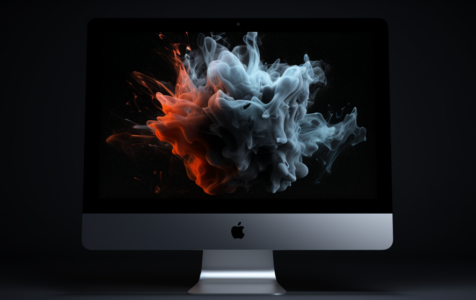It is rare for Mac computers to encounter problems, as they are known for their reliable hardware and software. However, they are still machines which performance can be affected by a number of interlinking factors. One of the problems that a Mac user might experience at one point is the black screen problem during system boot. Although often mistaken as a hardware-related issue, black screen on Mac is typically caused by software problems. Fortunately, this error can be resolved through several troubleshooting methods, the steps for which I will share with you in this article.
First Things First: What Causes Frozen Black Screen on Mac?
This problem can happen due to a number of reasons, but commonly, this is caused by glitches with system updates or upgrades. Some users also complain about the black screen when restarting their Mac from sleep or standby mode. But sometimes, the black screen error seems to occur unexpectedly and for no apparent reason at all.
Fixing Black Screen Errors: Before You Begin
Before trying out the different fixes for Mac’s black screen error, consider doing the following:
- Take note of any possible causes that you think could have led to the black screen issue. This will help you determine where to begin when trying to solve the problem. Did your Mac undergo an update recently? Did it go into deep sleep mode while you were doing something intensive?
- When you turn on your Mac and get welcomed by a black screen, try entering your password nonetheless. Some users report that doing so lets them get past the black screen.
Easy Fixes That Might Help
Before we get into the more technical fixes, here are basic ones that may work if you’re lucky enough.
Pro Tip: Scan your Mac for performance issues, junk files, harmful apps, and security threats
that can cause system issues or slow performance.
Special offer. About Outbyte, uninstall instructions, EULA, Privacy Policy.
- Ensure that your Mac is powered on – You need to rule out power issues before attempting anything else. If you pressed the power button on and there’s no sound coming from your computer, it could be a power problem. Check the outlet, plug AC adapter and cables to see if any of them are damaged.
- Adjust display brightness – It’s possible you may have simply pressed on the brightness keys accidentally — or who knows, maybe your cat did? Press F1 and F2 to see if the display will light up.
- Disconnect peripherals and accessories – Try removing or disconnecting external devices, such as USB drives and printers, from your iMac or Mac laptop. Sometimes, these devices start their own dialogue that may interfere with your computer’s display settings.
How to Fix Black Screen on MacBook Air or MacBook Pro?
If you’re using a Mac laptop or notebook with a built-in battery and it shows a black screen after coming from sleep mode, try closing the lid, opening it again, and then pressing a few keys on the keyboard. If nothing happens, try doing a force restart:
- Hold down the Power key for 6 seconds.
- Wait for the Mac to shut down — you’ll know it has if you no longer hear any sound coming from it — then, press the Power back on.
If that doesn’t help, you may need to reset the System Management Controller (SMC). Doing so will get rid of issues related to power management, from fan and heat problems to sleep and display errors. Here’s how to do this reset:
- Shut down your Mac, connect the power adapter (MagSafe), then plug it directly into a power outlet.
- Press Shift, Control, Option, and Power all at the same time. Hold down for a few seconds.
- Release the keys all at the same time.
- Turn on your Mac and allow it to boot as it normally would.
Keypress Sequence to Fix Mac Black Screen Problem
If the fixes above still don’t solve the problem, you can try this particular keypress sequence below. Whether you have a Mac desktop or notebook, this will hopefully help you get past the black screen. Just follow these steps:
- Press the Power button once. A dialog box will come up, although you won’t obviously see it because of the black screen.
- Press the S button, the shortcut to put a Mac to sleep.
- Press and hold down the Power button to force shut down the Mac.
- Wait about 15 seconds before turning the Mac back on.
Still No Luck? Try a PRAM Reset
Resetting the Parameter RAM (PRAM) is a solution similar to an SMC reset. Here’s how it’s done:
- Try turning on the Mac, and as soon as you hear the startup chime, hold down Command, Option, P, and R keys together.
- When you hear the startup or boot chime again, it means the PRAM has been reset. Wait for the Mac to boot as usual.
One Final Note: Prevention is Better Than Cure
Did any of the solutions provided here work to get you past the black screen on Mac? Congratulations! But even if there are several fixes to this error, it’s still best to not have to deal with it again, right?
Errors such as the black screen are typically a result of compromised files, programs, or even hardware components. To avoid these errors from building up, you must be able to detect if something is wrong with your computer before tiny problems become compounded and eventually cause trouble. Mac cleaners such as Outbyte Mac Repair can help you do just that. These programs are designed to scan your Mac for potential software and hardware problems, letting you act on them before it’s too late. So, once you get rid of that black screen, take the time to check out any of these handy Mac cleaners.
